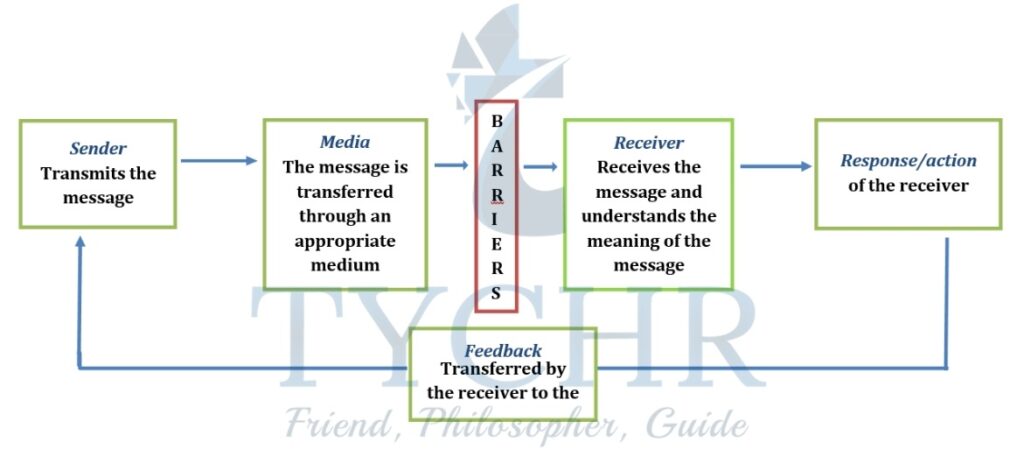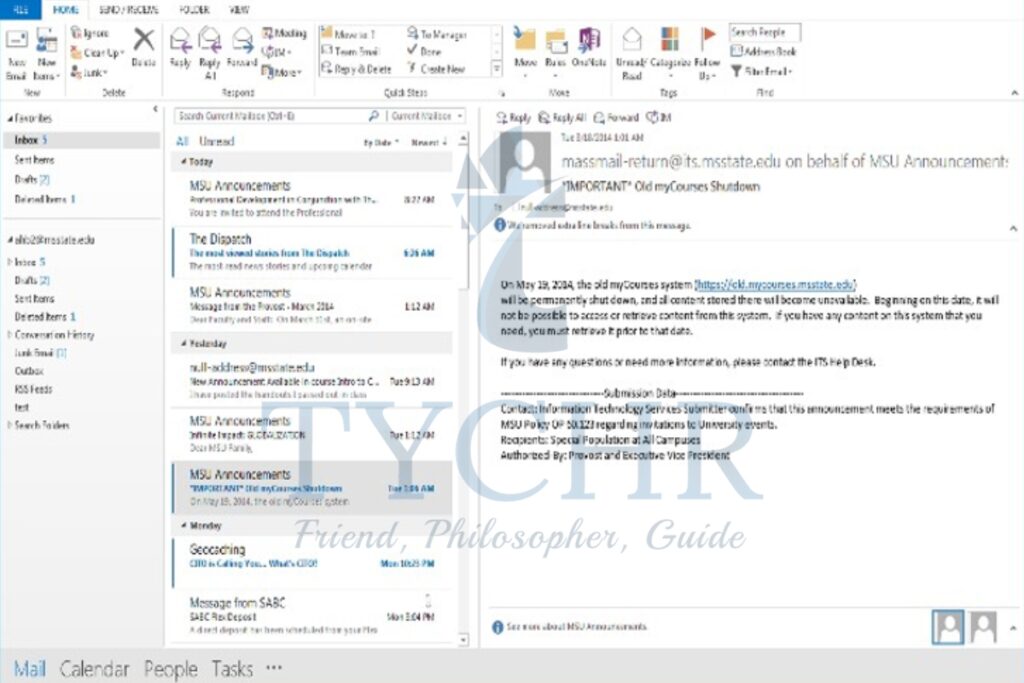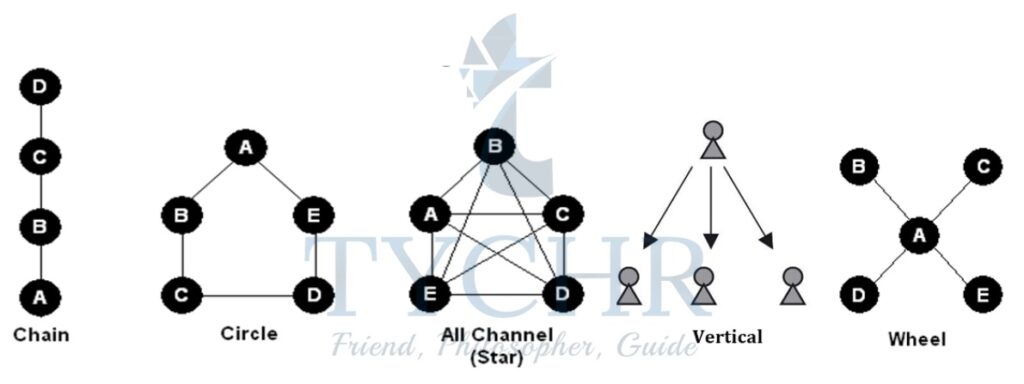communication Notes
Master the essential concepts of communication in IB DP Business Management with our detailed study notes. These notes cover both SL and HL syllabus topics, including internal and external communication methods, effective communication channels, and their impact on organizational efficiency. Designed to simplify complex ideas, our notes help students understand how communication plays a pivotal role in decision-making, teamwork, and business success. Whether you’re a beginner or looking for advanced insights, these resources are tailored to meet all your learning needs.
What do we mean by the term ‘communication’?
Communication is the transfer of information from the sender to the receiver. Effective communication takes place when the receiver interprets the message sent by the sender clearly and the sender knows that the receiver has properly understood the message. Effective communication between the people or groups is vital to the success of any organization.

Importance of effective communication
1.) Proper communication reduces the risk of errors. If a message is not clearly communicated and understood by the receiver, it can lead to wrong decisions.
2.) Proper communication is very important for a smooth flow of information between the functional departments to maintain coordination.
3.) An effective communication system helps the organization’s decision makers to communicate the necessary information to the workforce and it also assists the workers in sending the feedback to the top-level managers.
4.) With proper communication across hierarchical levels and the functional lines, decision-making is accelerated.
Different types of communication:
1. Verbal communication
When there is exchange of ideas or information through the words, it is called verbal communication. Verbal communication can be both oral and written.
A.) Oral communication

- There is instantaneous two-way communication in oral communication.
- There is no written record of the information/message that is transmitted in the oral communication.
- The receiver is able to understand the message clearly because of the face to face communication and the body language of the sender.
- One-to-one conversations, interviews, group discussions, conference and meetings, appraisal sessions, etc. involve oral communication.
B.) Written communication
- There is a proper written record of the message that is communicated which can be referred again later on.
- There is no immediate feedback or body language involved for clarity.
- This type of communication is important to transmit the messages pertaining to important technical matters.
- Reports, letters, memos, notices, etc. are used to transfer written messages. For example- The business plan is formally written on a piece of document for the reference of decision-makers.

C.) Electronic communication
- This is another type of communication where the messages are transmitted with the use of electronic media such as emails, video-conferencing, mobile phones, etc.
- Oral or written communication is often used with the electronic media.
Communication through electronic media reduces social contact. - This media of communication can be used by the people who are proficient with the use of the internet, electronic media devices, the communication software, etc.
- There is one major disadvantage of this type of communication. It involves cyber security and technical issues.
Let us discuss a few types of electronic media that are used by businesses in their day-to-day operations.
I. Electronic mail (E-mail)

- Computer wide area networks are used to transfer the data (message, images, documents, etc.) electronically from one device to another.
- Electronic mail is the fast method to send the written data across multiple recipients and hence it is a largely used communication medium in the businesses.
- There are one or two demerits of this communication medium which are listed below:
- The set-up costs of the computer system, internet service and the maintenance costs are quite high.
- Data transmission via email is not completely
secure because there are probable chances of hacking.
II. Mobile devices
- Mobile devices have been used as a communication medium since decades now. They have been primarily used to support oral and written communication between the sender and the receiver from distant places.
- The mobile devices are essentially used for calling and sending messages but with the advancement in technology, the ordinary telephones and keypad mobiles have been upgraded to smartphones and tablets. These devices support usage of various mobile applications, social networking, emailing and video conferencing in addition to calling and messaging.
- This communication medium is easily portable and easy to use.
III. Video-conferencing

- Video-conferencing is a commonly used communication medium in businesses that combines electronic devices (mobile, computers, etc.), internet and video-call
- technology.
- People can easily communicate and see each other when they are at distant places.
- It is used in business organizations to conduct interviews, training sessions, webinars, face-to-face client meetings, etc. Except for the initial high costs, it is a pocket-friendly communication medium since it helps in cutting travel and meeting room arrangement costs.
D. Visual communication

- Visual communication is a different category of communication media that supports oral/ written/ electronic communication.
- Whiteboards, slide projectors, cassette players, etc. are used to display presentations that consist of video, images, diagrams and charts. Colorful images/ diagrams create a visual effect and this helps the receiver to interpret the information more clearly.
- This form of communication is particularly used in businesses during training/ induction sessions, conference meetings, client presentations, etc.
2. Non-verbal communication
- Non-verbal communication takes place through facial expressions, body language and gestures, etc.
- This type of communication creates problems of interpretation. There are chances that receiver might not understand the sender’s non-verbal clues.
Factors that influence the choice of media
Speed- It depends on the requirement of the organization. If the organization required a speed communication medium for the transmission of data, then electronic devices must be used for the exchange of information.
Cost- If the business is trying to opt for a cheaper communication medium to save on the costs, then general oral/ written communication media can be used.
Quantity of information to be communicated- It depends on the quantity of data that is to be transmitted. Heavy and large amounts of information cannot be conveniently transferred through oral communication. A written record would be best suited in this case.
Size and geographical spread of business- If the business operates globally, then the use of electronic media would help the organization to carry out its operations smoothly because it would be practically impossible for the managers of different regions to conduct frequent meetings.
What is informal communication?
- The exchange of information and ideas among the members of the informal groups via unofficial channels of communication in an organization is called informal communication.
- It helps the people of the organization to satisfy their social communication needs.
- It improves the personal relationship among the members of the organization. This motivates them to engage effectively with each other in the formal structure too.
Barriers to effective communication
The factors that prevent a message/ information from being received or clearly understood by the receiver are called the ‘communication barriers’.
Communication barrier | Reasons for the barrier | Solution |
Failure in the process of communication | ||
a) inappropriate medium | E.g.- Incorrect understanding of a detailed message over phone. | Appropriate medium must be selected. |
b) Large quantity of information | The receiver might not grasp the important elements of the message because of excessive information. | Written form of communication must be used and key points must be highlighted. |
| c) Excessive use of technical language | Use of jargon can hamper the understanding of a particular group of people. | Use of jargon should be avoided. |
d) Long channels of communication | The information is distorted due to long channels of communication in an organization with tall structure | Delayering can be done to shorten the channels of communication. |
Poor attitudes of sender/receiver | ||
a) Receiver does not trust sender | The receiver might not be willing to listen to the information if the sender cannot be trusted on account of previous misleading messages. | Trust between the sender and receiver must be established. |
b) Intermediaries | Intermediaries in the communication channel might not pass the message correctly if they are poorly motivated. | Communication channels must be kept short and regular feedback must be encouraged. |
c) Sender’s poor perception of the receiver | The sender might not make any efforts to check if the message has been clearly understood by the receiver. | There should be regular informal discussion/ communication among people to clarify ill perceptions. |
Physical reasons | ||
a) Noisy working area | The information is not clearly understood by the people of the organization in a noisy environment (oral communication). | The methods to cancel noise must be used. |
b) Geographical distance | Distance creates communication problems. | Modern electronic media of communication solve this problem. |
We will now discuss the different types of formal communication networks. The communication network is the official channel or route of communication in an organization.

1. The chain network
This communication network is generally used in an organization with hierarchical structure. The message passes from the top to the lower level and hence there is one-way communication.
There is an authoritarian style of management in such an organization. This creates demotivation among the individuals at a lower level because they feel isolated.
2. The vertical network
This is the communication network that is followed in the small organizations or small departments of large organizations.
It is a one-way communication network where the leader/manager directs the subordinates individually.
3. The wheel network
A wheel network is where the leader is at the center of the wheel and there is two-communication between leader and the people on the sides of the wheel.
The leader being at the center controls the communication between the people of the same line. This makes the horizontal communication poor.
4. The circle
This is a decentralized communication network where there is no leader to control.
Any person in the circle can only communicate with the adjacent two persons on both sides.
There is delay in decision-making and strategy formation because the information reaches slowly to all the people due to the absence of a common leader.
5.The integrated/connected network
This communication network leads to a two-way communication.
There is a participative style of decision-making since all the members communicate with each other. The input from all the members helps in solving the complex problems.
We have arrived at the end of the chapter. Before we wind up, let us have a glance at the summary of the key topics that have been covered in the entire chapter of communication.
- Meaning of the term ‘communication’ and its importance
- The process of effective communication
- Different types of communication
- Barriers to the communication
- The formal communication networks
Whether you’re tackling SL or HL topics, our expert tutors at Tychr provide personalized support to strengthen your understanding of business communication. With tailored sessions and exam-focused strategies, we ensure you’re fully prepared to ace your IB DP Business Management assessments. Dive deeper into key communication concepts, resolve doubts, and achieve academic excellence with our dedicated IB DP Business Management SL and HL tutors guiding you every step of the way.

